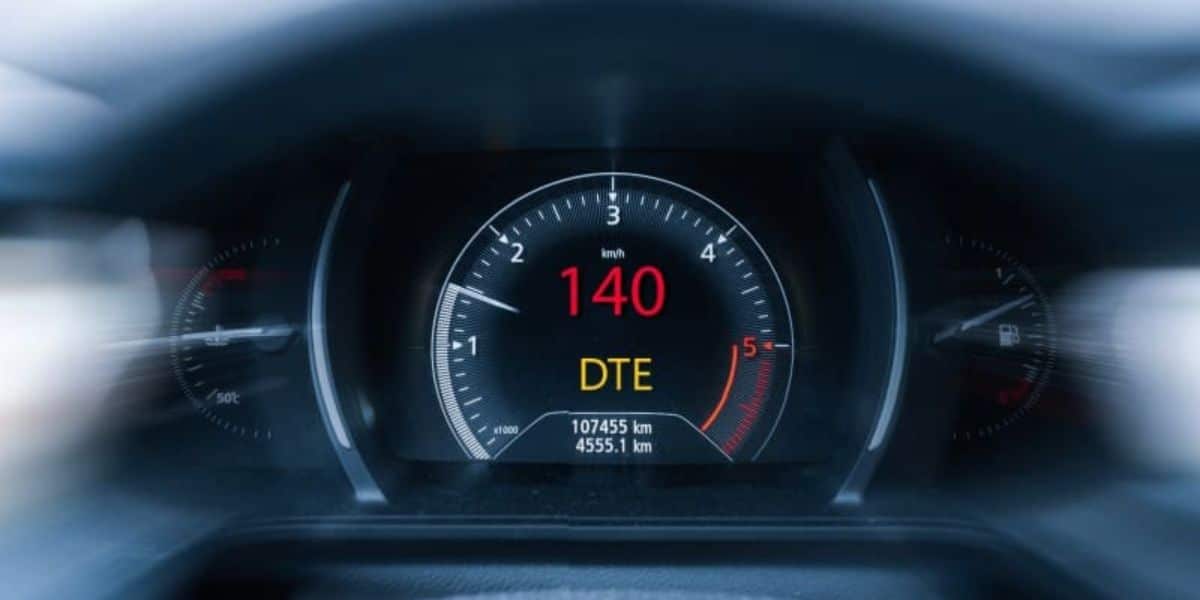DTE stands for “Distance to Empty” and is a feature in modern cars. It calculates the estimated number of miles or kilometers. It can be driven before the fuel tank is empty. The feature helps drivers plan refueling stops and avoid running out of gas.
Have you ever been on a road trip and wondered how far you can travel on your current gas tank? That’s where it’s comes in handy. Drivers can plan better and avoid getting stuck by checking how far they can go before running out of gas.
To check if your car has DTE, look at your owner’s manual or dashboard. Remember, keeping your gas tank at least a quarter full is important to prevent damage to your fuel system. So next time you hit the road, check your DTE and plan your refueling stops accordingly. Keep reading this article and we will explore what does dte mean in a car? and how to use it.
What is DTE, and How Does it Work?
DTE is a feature in many modern cars that estimates how far you can travel on your current fuel level. It looks at how much fuel you usually use in a specific time to figure it out. It estimates how much fuel you have left in your tank. The calculation considers how you drive, the land you drive on, and how well your engine works. It gives you an accurate estimate of how far you can travel before needing to fill up again.
It is usually displayed on your car’s dashboard in miles or kilometers. You can see how your driving habits affect fuel efficiency while driving because it updates in real time. Some cars also have an “instantaneous” DTE display. It shows you how far you can travel based on fuel level and driving conditions.
Why is DTE Important for Your Car?
What does dte mean in a car? This is important because it helps you avoid running out of gas. If you know how far you can travel on your current fuel level. You can plan your trips and avoid getting stranded on the side of the road. It also helps you manage your fuel consumption, saving you money on gas in the long run.
It can help you identify potential issues with your car’s fuel system. If your DTE is lower than it should be, it could indicate your car is not getting good fuel economy. There is a problem with your fuel system. In this case, having your car inspected by a qualified mechanic to identify and fix the issue is important.
How to Use DTE Effectively
Using DTE requires understanding its limitations and taking certain factors into account. Here are some tips for using it effectively:
Know your car’s fuel capacity:
DTE is commonly based on your car’s fuel tank capacity, so knowing how much gas your car can hold is important. This will help you calculate your DTE more and avoid running out of gas.
Take driving conditions into account:
DTE is affected by driving habits, terrain, and engine performance. For example, if you are driving uphill, your fuel consumption will be higher than going on a flat road. If you drive at high speeds, your fuel consumption will be higher than driving at a lower speed. Taking these factors into account can help you plan your trips more effectively.
Use DTE as a guide, not a guarantee:
While it is a helpful tool, it is only sometimes 100% accurate. Factors such as traffic conditions and changes in driving habits can affect your fuel consumption and DTE. Use DTE as a guide to plan your trips, but always be prepared for unexpected changes.
Factors Affecting DTE Accuracy
DTE accuracy can be affected by several factors, including:
Driving habits:
Your DTE calculation is based on your average fuel consumption over a certain period. If you change your driving habits, such as driving faster or slower. Your fuel consumption will vary, and your DTE calculation will become less accurate.
Terrain:
DTE is affected by the terrain you are driving on. If you drive uphill, fuel consumption will be higher than on a flat road. If you drive on a rough road, your fuel consumption will be higher than driving on a smooth road.
Engine performance:
If your car is not running, it will affect fuel consumption and DTE calculation. Make sure to keep up with your car’s maintenance schedule. This ensures that it is running at peak performance.
Fuel quality:
The quality of the fuel you use can affect your fuel consumption and your DTE calculation. Using lower-quality fuel can reduce your fuel economy and lower your DTE.
Common Misconceptions About DTE
There are several common misconceptions about DTE. These can lead to clarity and understanding. Here are some of the most common ones:
DTE is not a guarantee:
DTE is an estimate based on your average fuel consumption and other factors. It does not guarantee how far you can travel on your current fuel level. So it is important to use it as a guide rather than relying on it completely.
DTE does not factor in reserve fuel:
Many cars have a reserve fuel tank not included in the DTE calculation. This means that you may have more fuel left than your DTE suggests. But it would help if you filled it up as soon as possible to avoid running out of gas.
DTE does not factor in driving style:
DTE is based on your average fuel consumption, so it does not consider changes in driving style. If you suddenly start driving more aggressively. Your fuel consumption will increase, and your DTE calculation will become less accurate.
Troubleshooting DTE Readings in Your Car

If you are experiencing issues with DTE (Distance to Empty) readings in your car, there are several steps you can take to troubleshoot the problem:
Check the fuel gauge:
The fuel gauge may need to be fixed and accurately show the fuel amount in the tank. Check the gauge to ensure it is working correctly.
Reset the DTE:
Resetting the DTE calculation by filling up the tank and restarting the vehicle can help ensure that the calculation is accurate.
Check for leaks:
Check for any leaks in the fuel system, such as a leaking fuel line or a faulty fuel injector. Leaks can result in reduced fuel economy and affect the accuracy of the DTE calculation.
Check the fuel filter:
A clogged fuel filter can reduce fuel economy and affect the accuracy of the DTE reading. Check the filter and replace it if necessary.
Check the oxygen sensor:
The oxygen sensor measures the amount of oxygen in the exhaust and helps regulate the fuel mixture. A faulty sensor can result in reduced fuel economy. It affects the accuracy of the DTE calculation.
Check the fuel pump:
A faulty fuel pump can result in reduced fuel economy and affect the accuracy of the DTE calculation. Check the pump to ensure it is working correctly.
Check the fuel injectors:
Faulty fuel injectors can result in reduced fuel economy and affect the accuracy of the DTE reading. Check the injectors and replace them if necessary.
Conclusion
DTE stands for “Distance to Empty” in a car. It is a useful feature that informs drivers of the estimated distance. They can travel before running out of fuel. This information is calculated based on the amount of fuel in the tank. The average fuel consumption rate of the vehicle. What does dte mean in a car? DTE is typically displayed on the dashboard of modern cars. This can help drivers plan their trips. It indicates whether they need to refuel soon or if they have enough gas to reach their destination without stopping.
These feature benefits drivers who travel long distances. It allows them to avoid running out of gas unexpectedly. It is important to note that DTE is just an estimate and actual fuel consumption. It can vary depending on driving habits, road conditions, and other factors. Thus, refueling before the DTE reaches zero is always a good idea. Running out of gas can be dangerous and inconvenient.






